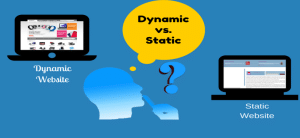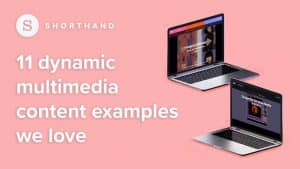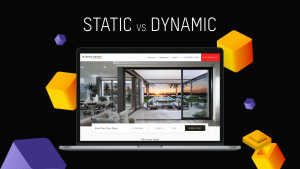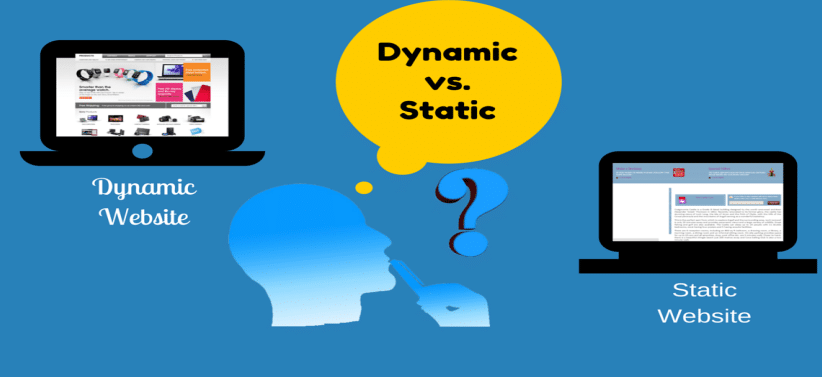Multimedia for a Dynamic Website
There is more to a website than just the text and the visuals. In the modern era of digital technology, multimedia is an essential component in the process of developing a website that is dynamic, interactive, and engaging. Multimedia, which includes anything from movies to infographics, not only improves the user experience but also increases the amount of time that visitors spend on your website, which eventually helps your search engine optimization. In the following paragraphs, we will discuss the numerous forms of multimedia that can be incorporated into a website in order to make it more dynamic, as well as the ways in which these types of multimedia contribute to improved user engagement.

Why Multimedia is Essential for Websites
An immersive experience is something that the modern online user anticipates. Although it is certainly crucial, text alone is not capable of fully engaging visitors in the same way as multimedia does. It is possible to ensure that your website is able to catch and maintain the interest of consumers by incorporating various forms of media, such as movies, audio, animations, and interactive components. In addition, the use of multimedia helps to simplify complicated material, which makes it simpler for your audience to comprehend and remember.
Enhancing User Engagement
It has been demonstrated that using multimedia can boost user engagement. Videos, for example, are able to convey a story or teach a topic considerably more quickly because of their visual nature. Infographics consolidate a substantial quantity of information into formats that are not only visually appealing but also simpler to comprehend. The likelihood that users will explore your website more, spread your material, and become devoted consumers or followers is increased when they are engaged with your website.
Boosting SEO and Dwell Time
Search engines such as Google take into consideration the amount of time that consumers spend on your website, which is referred to as “dwell time.” In general, a website that is rich in multimedia tends to keep viewers engaged for longer periods of time, which can enhance your rankings. Video content, for instance, is extremely shareable and encourages visitors to stay for longer. By including rich media into your content, you are sending a message to search engines that your information is valuable and should be displayed higher in search results.
Types of Multimedia for a Dynamic Website
There are many various kinds of multimedia that may be incorporated into a website, and each of these sorts of multimedia serves a particular purpose. First, let’s take a look at the most successful types:
1. Videos
It is possible that videos are the most powerful kind of multimedia that can be used on websites. Video content is highly engaging and enables you to express a message in a compelling manner. This is true whether you are presenting product demonstrations, making lessons, or sharing testimonials from satisfied customers.
It is important to take into consideration the following when adding videos to your website: – Embedding movies from sites such as YouTube or Vimeo in order to save server space – Optimizing videos in order to reduce loading times – Using subtitles in order to improve user comprehension and accessibility
2. Infographics
By combining images and text, infographics are able to deliver complicated information in a style that is both visually appealing and easy to understand. Users are able to swiftly and simply comprehend a great deal of information thanks to the fact that they are excellent for summarizing facts, procedures, or timelines.
Ensure that the design is clean and does not contain an excessive amount of information. Make the infographics shareable by incorporating embed links to encourage people to connect back to your website. Make sure that the alt text contains relevant keywords for search engine optimization.
3. Image Galleries
The way in which consumers view your website can be significantly influenced by the quality of the photos that you employ. When it comes to showcasing items, portfolio work, or events, image galleries are great for businesses operating in fields such as the fashion industry, the real estate industry, or the art industry.
When establishing image galleries, it is important to make use of responsive design to guarantee that images are displayed appropriately on all devices; compress images to reduce page load times without sacrificing image quality; and use detailed captions and alt text to increase search engine optimization.
4. Audio Content
Podcasts, interviews, and music clips are all examples of forms of media that are gaining popularity as sources of content for websites. Users that are constantly on the move may find audio content to be particularly fascinating because it enables them to consume your content without the need to read it yourself.
Utilize a podcast player or a sound widget during the process of introducing audio in order to make it simple for users to listen to your content right on your website.
– Make sure the audio file is compressed so that it may be streamed more quickly. – Provide transcripts for improved accessibility and search engine optimization.
5. Interactive Elements
User participation can be encouraged through the use of interactive multimedia components such as quizzes, polls, and calculators, which will make your website more interesting to visitors. It is extremely helpful for websites that provide educational content, e-commerce platforms, and entertainment platforms to utilize these types of media.
As you add interactive features, you should make sure that they are responsive and mobile-friendly. You should also employ real-time data feedback wherever it is applicable in order to make the experience more personalized. Finally, you should track user engagement with analytics in order to determine how effective the elements are.
Best Practices for Integrating Multimedia
It is essential to incorporate multimedia in an efficient manner in order to minimize performance difficulties and to guarantee a seamless user experience. Multimedia can significantly improve the quality of your website.
Optimize for Speed
If you do not correctly optimize your website, having large multimedia files can cause it to run more slowly. Websites that load slowly are frustrating for users and might result in greater bounce rates. So as to avoid this:
Compress photos and videos without compromising their quality. Make use of lazy loading for media assets, which delays loading until the user scrolls to that portion of the page. Ensure that your server and hosting plan are capable of meeting the increasing demand for resources.
Ensure Mobile Compatibility
Because mobile devices account for a sizeable amount of the traffic that is generated on the internet, it is of the utmost importance to guarantee that all multimedia components are fully responsive. It should be possible for videos, graphics, and interactive features to resize themselves automatically to fit the screen size of any device.

Focus on Accessibility
To ensure that all users, regardless of whether or not they have a disability, are able to enjoy your website, accessibility is essential. Ensure that all multimedia components are accessible by incorporating the following: – Including captions and transcripts for video and audio content – Including alternative text for each and every image
with interactive components that can be navigated with the keyboard
Monitor Performance
It is absolutely necessary to keep track of how well your multimedia components are functioning. If you want to be sure that your media is improving the user experience rather than making it more difficult, you should make use of analytics tools to monitor engagement rates, load times, and user behavior.
Conclusion
The use of multimedia into your website is absolutely necessary in order to manufacture a user experience that is dynamic, engaging, and interactive. The appropriate combination of media, which may include videos and interactive tools, has the potential to significantly enhance the way in which consumers interact with your website, thereby enhancing your search engine optimization and increasing the amount of time they spend on your site. In spite of this, it is of the utmost importance to make certain that your multimedia is optimized for speed, mobile-friendly, accessible, and continually checked in order to achieve the highest possible level of efficacy. It is possible to employ multimedia to develop a website that is powerful and dynamic, which will keep users coming back for more if you choose to follow best practices.






